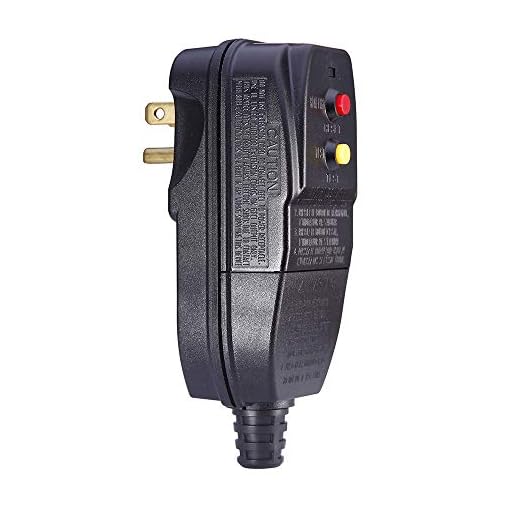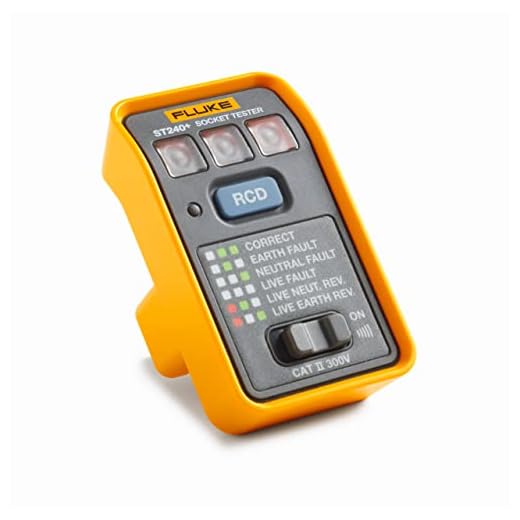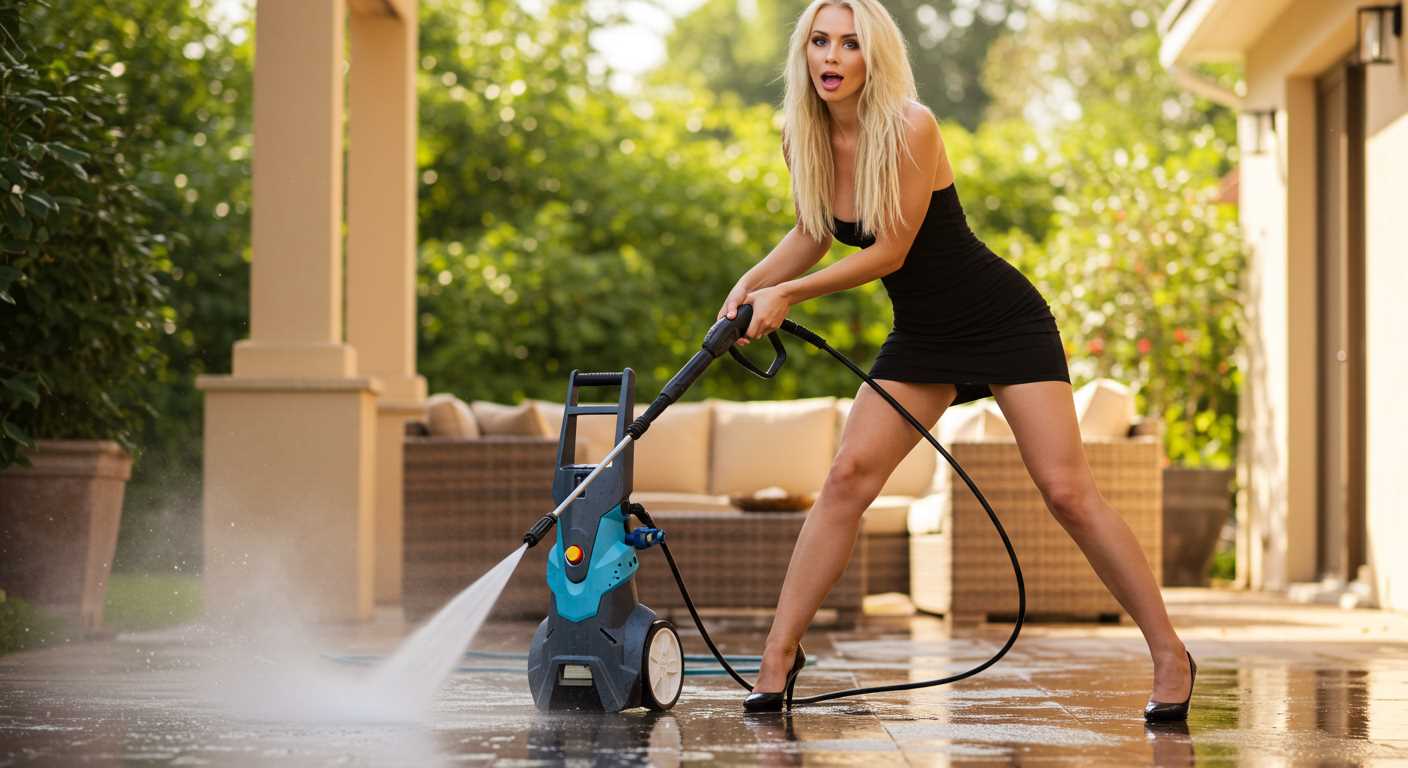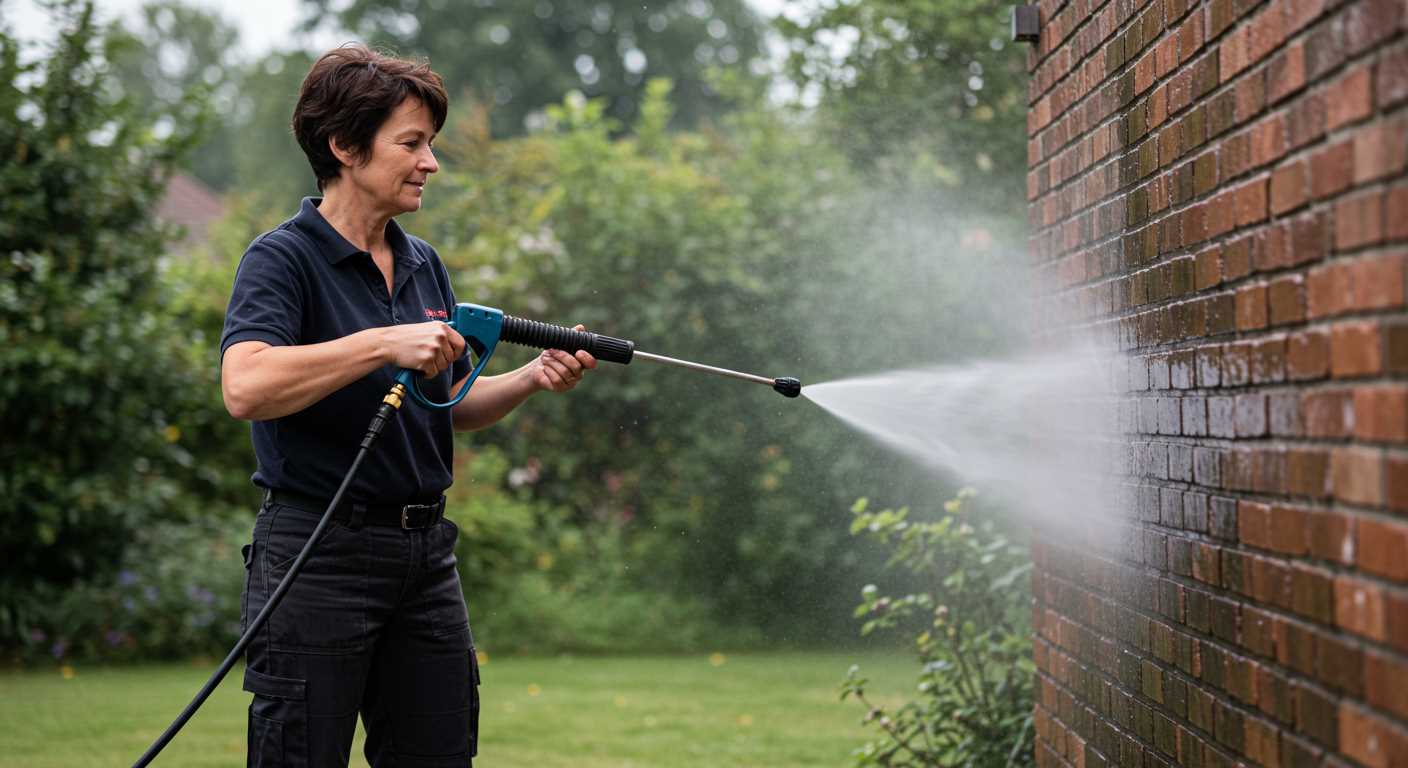



Inspect the power supply first. If you notice repeated interruptions during operation, check the rating of the outlet. Using a socket that does not match the amperage requirements can lead to blown circuit breakers. Ensure the cleaning apparatus is plugged into an outlet that provides sufficient power, typically a dedicated circuit to handle its load.
Next, examine the extension cord, if in use. Thinning wires or length beyond the recommended limit can cause voltage drops, resulting in overheating and short circuits. Opt for a shorter, heavy-duty extension cable that meets the device’s power specifications to prevent unnecessary strain.
Investigate the water supply as well. Insufficient flow can cause the motor to overheat; this is often a contributing factor to electrical failures. Ensure that the inlet filter is clean and that there is no obstruction in the hose. Regular maintenance of these components can prevent overheating and potential electrical issues.
Lastly, consider seeking professional assistance when internal components show signs of wear. Failing components, including faulty pressure switches or aged electrical wiring, can be the root cause of these failures. Regular inspections can extend the lifespan of your equipment and minimise the likelihood of recurring electrical problems.
Root Causes for Fuse Issues
Ensure your equipment is connected to a circuit that can handle the load requirements. If the rating is insufficient, it may trip the fuse frequently. Consider using a dedicated circuit for reliable operation.
Examine the power cord for damage. Signs of wear, fraying, or cuts can lead to circuit faults, resulting in fuse failures. Replace any compromised components to maintain electrical integrity.
Check for any blockages in the water inlet or spray nozzle. Restriction in water flow can cause the motor to overwork, leading to electrical overloads and subsequent fuse issues.
Inspect the motor for any signs of overheating or mechanical failure. An inefficient motor not only consumes more electricity but may also create hazardous conditions that trigger fuses. Regular maintenance can help identify such problems early.
Evaluate the pump for any abnormalities. If it is malfunctioning, the motor may struggle excessively, drawing more current and causing frequent fuse interruptions. Addressing pump issues promptly is essential.
Lastly, consider environmental factors. High humidity or moisture in the vicinity could impact electrical connections. Ensure all components are appropriately sealed and protected from excessive moisture exposure.
Identifying Common Electrical Issues in Washing Units
First, I recommend checking the power supply. Ensure the outlet you’re using is in good condition and properly grounded. An overloaded circuit can lead to frequent interruptions. If you’re using an extension cord, confirm it is rated for the equipment’s demands; an inadequate cord can lead to voltage drops, triggering safety features.
Faulty connectors are another common culprit. Inspect the plug for any signs of wear or damage. Loose or corroded connections can cause arcing, leading to overheating. It’s advisable to clean and tighten connections regularly.
Motor Faults
A malfunctioning motor can draw excessive current, which may trip the circuit breaker. Listen for unusual sounds or overheating when operating. If the motor appears faulty, you may need to consult a technician for testing and possible replacement.
Internal Short Circuits
Check for damaged wires or components within the unit. Signs of burns or melted insulation often indicate a short circuit. Open the housing to visually inspect for any issues. If you find any damaged parts, they should be replaced promptly to prevent fire hazards.
| Issue | Symptoms | Solution |
|---|---|---|
| Power Supply | No power, tripped circuit | Check outlet and circuit load |
| Faulty Connectors | Overheating, arcing | Inspect and replace connectors |
| Motor Faults | Unusual noises, overheating | Test or replace motor |
| Internal Short Circuits | Sparking, burning smell | Inspect wiring, replace damaged parts |
Keeping these aspects in check will help maintain the functionality and safety of your cleaning equipment. Regular maintenance is key to avoiding electrical issues and ensuring longevity.
Checking power supply and outlet compatibility
Ensure that the outlet provides the correct voltage and amperage as specified in the user manual. Mismatched voltage can lead to significant electrical issues that may damage the equipment.
Verify the amperage rating of your circuit. High-power devices require dedicated circuits. If the circuit is shared with other appliances, it may overload, leading to blown circuit breakers.
Inspect the extension cords. Using cords that are too long or of inadequate gauge can increase resistance, causing the device to draw more current than the circuit can handle.
Test the outlet with a multimeter to confirm it’s supplying the correct voltage. Any voltage drop could indicate problems with the circuit or the outlet itself.
Check for signs of wear or damage on the power cord and plug. Frayed wires could cause short circuits, leading to blown fuses.
If using an outdoor socket, ensure it’s rated for wet conditions. Inadequate weather protection can lead to moisture ingress, creating electrical faults.
For consistent performance, avoid using adaptors that reduce voltage. Using the right plug configuration helps maintain stability in power delivery.
Understanding Overload and Short Circuit Problems
Addressing overload and short circuit issues in your washing unit is critical for quick resolution. Overloads occur when the device draws more current than its circuit can handle. This often results from blocked hoses, clogged filters, or malfunctioning components leading to excessive strain on the motor.
Signs of Overload

- Frequent tripping of the circuit breaker.
- Unusual noises from the motor, indicating it’s straining to operate.
- Overheating of the machine’s exterior or electrical components.
In case you observe these signs, it’s advisable to inspect hoses and filters for blockages and check for mechanical failures within the motor or pump assembly.
Identifying Short Circuits

- Burning smells indicating overheating wires or components.
- Visible fraying or damage to power cords.
- Inconsistent operation or complete shutdown of the unit.
For detecting a short circuit, start by examining the electrical connections and power cords for integrity. If there’s visible damage, replace the faulty components immediately. In more complex cases, testing with a multimeter to check continuity in circuits can uncover hidden issues. If unsure, consulting a professional technician ensures safety and efficiency in repairs.
Examining Damaged Power Cords and Connectors
Inspect every inch of the power cords and connectors for any signs of wear or damage. Look for fraying, cracks, or exposed wires which could lead to electrical faults. Any visible defect compromises safety and performance.
Ensure the connectors fit snugly into their sockets. Loose connections can increase resistance, leading to overheating and potential circuit failure. Keep the connectors clean and free of corrosion to maintain conductivity.
Steps to Evaluate Power Cords
- Unplug the unit before inspection to avoid electrical shock.
- Examine the entire length of the power cord, checking for cuts or abrasions.
- Flex the cord gently, watching for any internal breakages that aren’t visible on the surface.
- Loosen any tight bends in the cable that could lead to stress points.
Connector Check
- Remove any dirt or grime from the connectors to ensure a good contact.
- Look for bent pins or damaged locking mechanisms that may impede connection.
- If using extension cords, verify their ratings match the requirements of the unit.
If any issues are found during this examination, replace either the power cord or connectors immediately to prevent further electrical problems. Prioritising these components can significantly reduce the risk of failures and protect your equipment for years to come.
Assessing the motor and internal components for faults
Begin by disconnecting the unit from its power source. Inspect the motor for any signs of burn marks or damaged insulation. A burnt smell or visible scorch marks indicate a need for motor replacement. Check the brushes in the commutator; worn brushes can cause poor motor performance and possible overload.
Next, examine the capacitor, which can fail and lead to short circuits. Use a multimeter to measure capacitance; if it deviates from specifications, consider replacement. Make sure all connections are secure and free from corrosion, as loose or rusted connections can create resistance and lead to overheating.
Inspect the pump assembly thoroughly. Look for blockages in the inlet or outlet hoses. A clogged filter can cause excessive strain on the motor, resulting in its failure. Additionally, listen for unusual noises during operation; grinding or rattling sounds often suggest internal component wear.
Evaluate the thermal overload switch. If the switch trips frequently, it could indicate that the motor is drawing too much current. This could stem from internal friction or a malfunctioning component preventing smooth operation.
Finally, record any irregularities or signs of wear. Keeping a detailed log can help identify recurring issues and will be invaluable if professional repair is necessary. Addressing these internal aspects can greatly enhance the longevity and reliability of your cleaning equipment.
Investigating GFCI and RCD device implications

Regularly testing Ground Fault Circuit Interrupters (GFCIs) and Residual Current Devices (RCDs) can significantly reduce the risk of electrical issues with your equipment. These devices provide essential protection from electrical faults by cutting off power when an imbalance is detected. If your cleaning machine is tripping these protective devices, it often indicates potential faults in the electrical system.
Ensure GFCIs and RCDs are correctly rated for the load your appliance requires. Mismatched ratings can lead to unnecessary trips, disrupting operation and causing annoyance. Checking compatibility and voltage ratings will help avoid issues during use.
Inspect the installation of these devices. Inadequate wiring, moisture ingress, or other installation errors can compromise their effectiveness. Ensuring that the electrical system is in good condition can greatly enhance the reliability of overcurrent protection mechanisms.
If frequent tripping of GFCIs or RCDs occurs, it may reveal underlying faults within the motor or power supply components. Comprehensive evaluation of the entire electrical circuit connected to these devices is paramount. Simple tests can be conducted using multimeters to ensure proper functionality and safety compliance.
In summary, maintaining and testing GFCIs and RCDs regularly is a proactive approach to avoid unplanned interruptions during operations, ensuring a safer and more reliable usage experience.
Where to seek professional repair services for your Karcher
Locate authorised service centres for reliable diagnostics and repairs. These specialists possess genuine parts and trained technicians who understand the intricacies of these appliances.
Explore local appliance repair shops with skilled electricians. They can provide valuable assistance with electrical issues, ensuring a thorough examination of your equipment.
Consult online forums and community groups dedicated to cleaning equipment. Members often share recommendations for trustworthy repair services based on personal experiences.
Check the manufacturer’s website for a list of certified technicians in your area. This resource can guide you to professionals who are familiar with your specific model.
Consider reaching out to the original retailer where the unit was purchased. They may offer warranty services or could direct you to a reliable repair partner.
Utilise social media platforms to seek out recommendations. Many repair professionals advertise their services and can provide customer testimonials.
Inspect local classifieds and trade publications for advertisements highlighting skilled repair services. Many technicians in these listings may have extensive experience with cleaning equipment.
Before making a decision, request quotes and evaluate the service options available, ensuring you select a provider that fits your budget and needs.
FAQ:
What could be the reasons why my Karcher pressure washer keeps blowing fuses?
There are several potential reasons for your Karcher pressure washer blowing fuses. Firstly, it may be due to a short circuit in the power cord or the pressure washer itself. Inspect the cord for any visible damage, such as frays or abrasions. Secondly, the machine might be drawing more power than the circuit can handle. This situation can occur if there are multiple appliances on the same circuit, leading to overload. Another reason can be water ingress into electrical components, which can also cause shorts. Additionally, a faulty motor or pump could create an electrical problem. If the issue persists, it is advisable to consult with a professional technician to diagnose the fault accurately.
How can I troubleshoot my Karcher pressure washer that blows fuses frequently?
Troubleshooting a Karcher pressure washer that frequently blows fuses involves several steps. Start by ensuring the pressure washer is connected to a proper power source with the correct voltage. Check the power cord and plug for any damage, replacing them if necessary. Next, try plugging the machine into a different outlet to rule out issues with the socket. If the problem continues, inspect the machine for water leakage or signs of electrical faults. Disconnect and check components like the motor and pump for any irregularities. If you’re not confident in diagnosing electrical issues, it is wise to contact Karcher customer support or a qualified technician for assistance. Regular maintenance and thorough cleaning can also help prevent these problems from arising in the first place.







